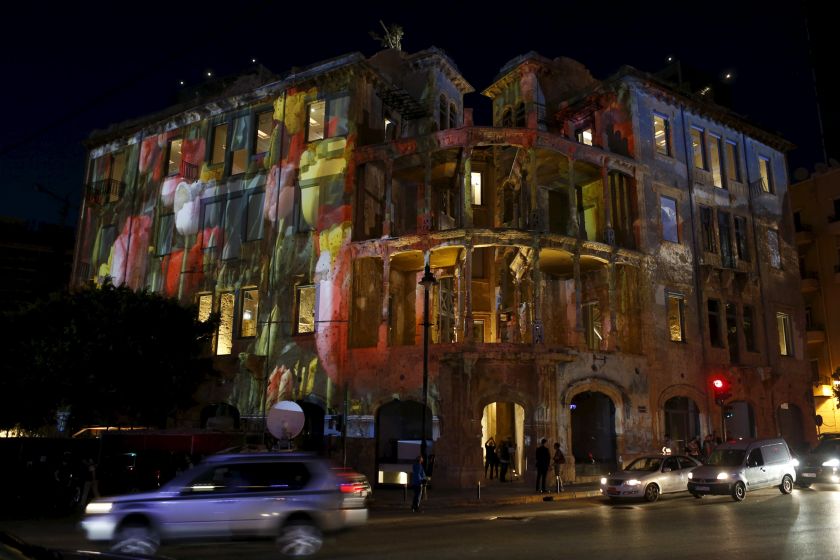Beirut- The much-anticipated opening of the “Yellow House”- Beit Beirut has been postponed despite the completion of renovations.
The Yellow House is also known as the “Barakat building” after the family that lived in it before the war. Its façade covered with bullet holes tells the story of a long and bitter war, which still irritate many Lebanese who suffered from its aches and feel helpless facing its sorrowful memories.
One of the activists defending the project conducted to reserve this building said the museum named “Beit Beirut” aims to humanize the war, or give it a human aspect, in order to highlight the changes and shifts that took place in this city and its citizens since the end of the war in 1990.
Mona Hallak, and architect and activist interested in heritage preserve, who helped ban a contracting company from buying the building and demolishing it, told Reuters: “Here in Beirut, we want to tell the stories of the city and its inhabitants. How people change during the war, and how the city itself changes.”
Hallak said she prefers not to partake in the civil war debate. She said the museum aims to spotlight the memories of Beirut and not only the memories of its war, but also the memories of peace and changes it saw.
The story of Beit Beirut started in 1924; it was owned by the Barakat family who chose Lebanese architect Youssef Afandi Aftimos to design it during the rule of the French colonial empire.. Aftimos was a well-known architect, who built the grand theatre in downtown Beirut and the clock tower of the Grand Serai, now the seat of the Cabinet.
He designed the palace with open corners, which offered its rooms special open views. When you step into the palace, you will find light in all its apartments.
In 1932, Architect Fouad Kazah added his special touches to the Beit of Beirut, and enhanced the architectural techniques, with a mix of Ottoman and Western civilizations. He used the sandy yellow stone, from which the “yellow house” name was inspired.
With the beginning of the civil war in 1975, the residents of the yellow house found themselves at the heart of the battles, stuck between the warring East Beirut and West Beirut, particularly in the area of Sodeco, one of the most dangerous conflict zones in the capital. The Barakat family fled the house and left it for the war militias who benefitted from its open architecture and used it as a snipers’ base to target people in the streets. By the end of the war, the yellow house was damaged and remarkably distorted. It was enlisted among the buildings to be demolished in 1990.
Hallak said despite the conclusion of renovation works and the availability of financial resources, the museum hasn’t been officially opened yet. She added that the house was renovated and people heard about its inauguration many times, but the house and its cultural content are still unveiled. Finally, Hallak said: “today, we call the Municipality and the Mayor of Beirut to launch the cultural content and program of this building, especially that money and human expertise are available.”
The restoration process and the program planning have been handed to the municipality of Beirut, but some obstacles have prevented the opening. Beirut Governor Ziad Shbib said the opening is not delayed because of obstacles; however, the municipality is currently working on rehabilitating many museums, and intends to set a unified program for all of them.
The mayor said the municipality is working on major pre-opening preparations for many establishments that will form the cultural infrastructure of Beirut, including the Museum of Lebanese Prehistory, and House of Fairouz.
The establishment’s restoration took around 10 years and had cost around $18 million. The old yellow building located among other newer establishments, including a center for research, a hall for events, and a library. The restoration process was executed with a technical cooperation from the municipality of Paris.
